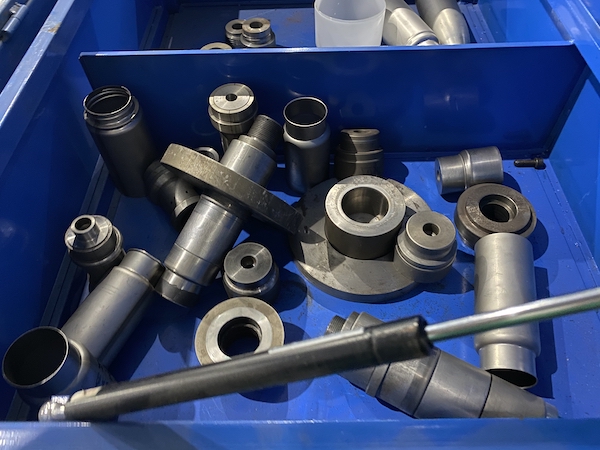
Molds have played an irreplaceable role in our lives. Most of our daily necessities are made from molds, such as computers, phones, mouses, keyboards, headphones, and so on.
The covers of cars and motorcycles are also made of molds. More than 20,000 molds are needed for one car. The role of molds in modern life is very important. Mass production needs molds.
The same goes for drinkware products. The production of stainless steel tumblers, plastic water bottles, or glass cups requires a set of molds.
However, molds are relatively unfamiliar to many people, and do not know much about them. In this article, you can get the answers for the questions in the following:
1. What is mold?
2. Who needs a mold?
3. How much is mold?
4. What is the process of ordering a mold?
1. What is mold?
A mold is a tool used in industrial production to make forming components by injection molding, blow molding, extrusion, die casting or forging, smelting, stamping, etc.
There are many types of molds, but they are usually split into the following two types:
· Mold for metal products: like stainless steel and aluminum bottles.
· Mold for non-metal products: like plastic and glass bottles.
Different molds consist of different parts. Their main principle is to produce the desired shape of the components by changing the physical state of the molding material.
2. Who needs a mold?
Whether you are a small company or a large enterprise, creating your own mold can effectively avoid product homogeneity.
More and more companies make their product different by creating unique shapes for their products. That could enhance the market competitiveness and win more business.
As long as you want to make products with different designs, you need molds. You can have your own private mold and keep the exclusivity.
3. How much is mold?
You may hear that the mold fee is expensive. The mold fee of some products costs thousands of dollars, and the mold fee of some products costs tens of thousands of dollars, or even higher.
But, why is it so expensive? Where does the cost of a set of molds spend to?
The cost of the mold is related to the size, complexity, precision of the product, and the requirements of the customer.
Mold production is extremely complex and time-consuming. A set of molds can be completed through design, processing, assembly, and mold testing. There are high costs associated with each process, including:
Design fee: product design fee, mold design fee, and program design fee.
Raw material cost: steel, electrode material, and other accessories.
Processing cost: processing procedures include CNC, EDM, wire cutting, deep hole drilling, fitter, engraving, skin texture processing, etc.
Assembly and trial run cost: a mold needs to be tested after completion. It will usually take three times.
Other costs: machine wear and tear cost, heat treatment cost, and others.
Roughly speaking, the production-cost ratio of mold manufacturing is as follows:
1. Design cost and processing cost 65%;
2. Raw material cost 20%;
3. Assembly and trial run cost 10%
4. Other costs 5%
Therefore, the specific cost of molds needs to be confirmed with your supplier.
4. What is the process of ordering a mold?
1) Early-stage discussions between customers and suppliers
2) Quotation
3) Purchase Order
4) Production Planning and Schedule Arrangement
5) Design
6) Procurement of materials
7) Machining
8) Assembly
9) Trial Run
10) Mold Completed
Simply understand that the mold is a customized product., not a standard product.
It is like the clothes that can be bought in the mall and the clothes that are customized by designers are completely different stories.
That’s why mold prices are high, and take much longer times.
Hope that through this article, you have a deeper understanding of the mold.


3 Responses
Thanks for the great article!
We are so glad that you like it. Your comment is a great encouragement for us. We’ll definitely share more what we know about the industry. Don’t forget to come back and check out our new articles. Thank you!
Thanks!